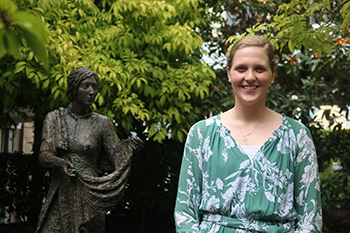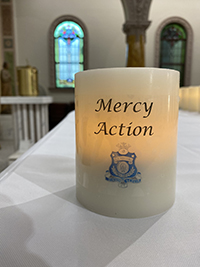
There is no doubt that Catholic schools play a pivotal role in assisting young people to develop a spiritual connection with God, and part of this is assisting them to realise their own gifts. The declaration of the Second Vatican Council, Gravissimum Educationis, clearly states that the special function of a Catholic school is to “enable young people, while developing their own personality, to grow at the same time in that new life which has been given to them in baptism”. As mentioned by Nathan Ahearne in last month’s article, one way schools can assist students to realise this baptismal call is by nurturing and supporting them to discern their own personal charism, and in doing so “begin to nurture them in a lifelong journey of formation”. Both guiding charisms and mentor educators play a key role in schools achieving this.
Personal charisms
In their simplest form, charisms are personal gifts of the Holy Spirit gifted to us for the betterment of others. Sherry Weddell, executive director of the US-based Catherine of Siena Institute, states: “Charisms don’t belong to us; they are for others. We are merely stewards of these gifts.” It is important to make the distinction between a learned skill being something that can be developed and practised over time, and that of a personal charism, something that is innately possessed by a person and revealed in their life as a gift of the Holy Spirit.
Guiding charisms
It should be noted that in high school, students are often unfamiliar with the concept of one holding a ‘personal charism’. For many students, charism is a concept they are only introduced to when commencing at a Catholic school. Claude Marachel’s description best encapsulates how many experience it: “A charism [gives] people a road map to living the Gospel message by providing: A story to enter. A language to speak. A group to which to belong. A way to pray. A work to undertake. A face of God to see…”.
Charisms modelled on pioneering founders of religious orders can be an invaluable access point for many students to live the Gospel in modern times. In saying this, it is important to remember the charism for that individual was ultimately a gift from the Holy Spirit, and therefore must be constantly underpinned and referred to as originating from the stories of the guiding Gospels and Jesus’ life.
Example of a guiding charism – Mercy
 Schools in the Mercy tradition are guided by the Sisters of Mercy, a religious congregation established by Venerable Catherine McAuley in 1827. It is said that Catherine’s own charism “involved a deep understanding of and commitment to the Mercy of God” (One Charism, Many Paths, 2017). Today, students are inspired by her story of living her charism in Dublin in the 1800s through her practical, courageous and heartfelt care of the poor and vulnerable, which provided inherent dignity to every person she encountered. Catherine’s story offers an engaging and contemporary example of a person living the Gospel values in more modern times, something that seems to appeal strongly to young people.
Schools in the Mercy tradition are guided by the Sisters of Mercy, a religious congregation established by Venerable Catherine McAuley in 1827. It is said that Catherine’s own charism “involved a deep understanding of and commitment to the Mercy of God” (One Charism, Many Paths, 2017). Today, students are inspired by her story of living her charism in Dublin in the 1800s through her practical, courageous and heartfelt care of the poor and vulnerable, which provided inherent dignity to every person she encountered. Catherine’s story offers an engaging and contemporary example of a person living the Gospel values in more modern times, something that seems to appeal strongly to young people.
So, how do we create a link between these guiding charisms and a student discerning their own personal charism? The answer lies in the experiences a school offers students to authentically challenge themselves in ways that reveal these spiritual gifts. Mercy schools aim to introduce students to spiritual gifts through practical works of social justice and community engagement. All Hallows’ School calls this program “Mercy Action”. Experiences within these programs afford students the opportunity to practically engage with activities that reveal gifts that assist in discerning charisms, which are not provided in a traditional classroom. This may include working with the homeless by cooking breakfast, caring for young people, providing conversation and company for the elderly and advocating for world issues. Such experiences allow students to explore hospitality and leadership through the lens of the Mercy charism.
The role of the educator
“In their journey of faith, adolescents need to have convinced and compelling witness by their side” (Directory for Catechesis n.248)
It is the role of mentor educators and Catholic adults to assist in identifying and fostering glimmers of spiritual gifts in students when we see them. At the Mercy school I teach at, All Hallows’ School, our vertical House system offers a pastoral care structure in which educators can be connected to a young person for the duration of their high school journey. Through my role as a Head of House, I am afforded the opportunity to know a student when they enter my care in Year 7 until they complete their schooling in Year 12. Furthermore, they also have the guidance of a Home Group teacher to support them during this time. This model allows for consistent spiritual support of students on their journey and often affords me the privilege of recognising and celebrating students’ spiritual gifts and to offer support for students as they take their next step in life. To fulfil our role as educators, we must know our students and their stories – truly and deeply – to identify these gifts of the Holy Spirit at work.
As educational institutions that are steeped in the Catholic tradition and their own founding charisms, it is important that schools are providing authentic experiences to students with a high level of spiritual support. In providing these resources, schools achieve a twofold benefit, assisting their local community members in need as well as providing their students with the vital experiences to discern their own personal charism.
Steph Langley is a Mercy educator at All Hallows’ School. In her role as Head of House, she is responsible for the pastoral development of the students of Coolock House in Years 7 to 12. Passionate about the story and work of Catherine McAuley, Steph aims to support the Sisters of Mercy in educating students through the Mercy charism. She recently completed the Leadership for Mission course (2020/2021 cohort), obtaining a Graduate Certificate in Theological Studies.
Images: Suplied
Words: Steph Langley



